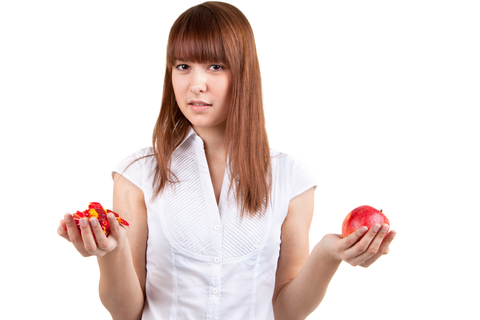 If you’re trying to reduce your sugar intake to lose weight and avoid chronic diseases like diabetes, cancer and heart disease, you’re not alone. Sugar has replaced fat as the most loathed dietary villain in the 21st century, and for good reason.
If you’re trying to reduce your sugar intake to lose weight and avoid chronic diseases like diabetes, cancer and heart disease, you’re not alone. Sugar has replaced fat as the most loathed dietary villain in the 21st century, and for good reason.
Far from just providing you with ‘empty calories’ that promote weight gain, sugar may contribute to chronic diseases by acting as a metabolic ‘poison.’ According to Dr. Robert Lustig:[i]
“It’s not about the calories … It has nothing to do with the calories. It’s a poison by itself.”
If you’re among those trying to cut back, you’ve probably already tackled the main offenders in your diet, like soda, cookies, candy and ice cream. What may surprise you is that your sugar intake may still be excessively high even after you’ve cut out ‘sweets,’ because sugar is hidden in many, many foods (including some you think are savory).
To put things into perspective, health authorities advise adult women to limit their sugar consumption to 5 teaspoons (20 grams) per day, adult men to 9 teaspoons (36 grams) daily, and 3 teaspoons (12 grams) a day for children.
Foods High in Sugar: 12 That Might Surprise You
12. Dried Fruit: It sounds healthy, but tart fruits like cranberries often have sugar added when they’re dried. Just one serving of dried cranberries can contain up to 25 grams of sugar.
11. Barbecue Sauce: Sugar is a main ingredient in most barbecue sauces, which can easily add 9 grams of sugar or more per cup. There are about 18 grams of sugar in the average pulled pork sandwich, and even more if you like extra sauce.
10. Reduced-Fat Salad Dressing: The missing fat is often replaced with sweeteners, which is why some reduced-fat dressings can have 50 grams of sugar in a half-cup.
9. Baked Beans: Baked beans are often smothered in a sugary sauce that can contain 15 grams of sugar per half-cup.
8. Sports Drinks: Most people think that these are mostly a mixture of electrolytes and sodium, but they also contain up to 21 grams of sugar in one 12-ounce bottle.
7. Canned or Pre-packaged Fruit: If your fruit is packaged in syrup (even light syrup), it means it contains added sugar. One small serving cup of diced pears or mandarin oranges in light syrup can contain 17 grams of sugar (that’s more than the recommended daily amount for a child).
6. Applesauce: Look for unsweetened applesauce, as if yours contains sugar (as many ‘original’ varieties do), it could have more than 20 grams in just one individual-serving sized cup.
5. Protein Bars: These ‘health’ foods are often nothing more than fancily packaged candy bars. One popular brand packs 20 grams of sugar per bar! If you’re in need of protein, try a hard-boiled egg or a handful of almonds instead.
4. Bran Muffins: Some, but not all, bran muffins can contain 40 grams of sugar per muffin. If you want to be sure, check the nutrition facts label or, alternatively, make your own low-sugar variety at home.
3. Healthy Cereal: You know those brightly colored ring-shaped kids’ cereals are high in sugar, but even healthy sounding adult varieties are often sugar-laden. Oat bran, toasted oat and other cereals marketed as healthy can contain 17 grams of sugar per serving.
2. Spaghetti Sauce: Savory bottled sauces like tomato & basil or marinara can contain 12 grams of sugar in a half-cup. According to federal guidelines, a woman would be over her daily sugar allotment with just one cup of sauce (and that’s before you even factor in the pasta).
1. Bottled Iced Tea or Flavored Waters: Iced tea certainly sounds healthier than soda, but some bottled brands contain more than 50 grams of sugar per bottle! Even flavored waters that are marketed as health-enhancing beverages can contain more than 30 grams of sugar in just one bottle.
Want to learn more “insider-info”?
Find out The Top 3 DIRTIEST SECRETS Lurking in the Pain Relief Industry’s Closet of Lies now…

